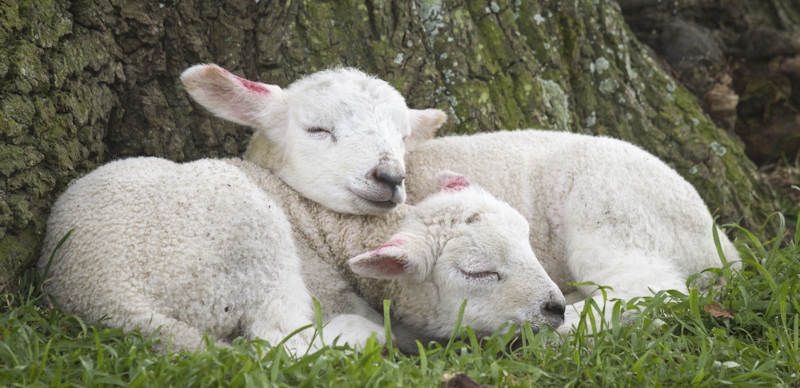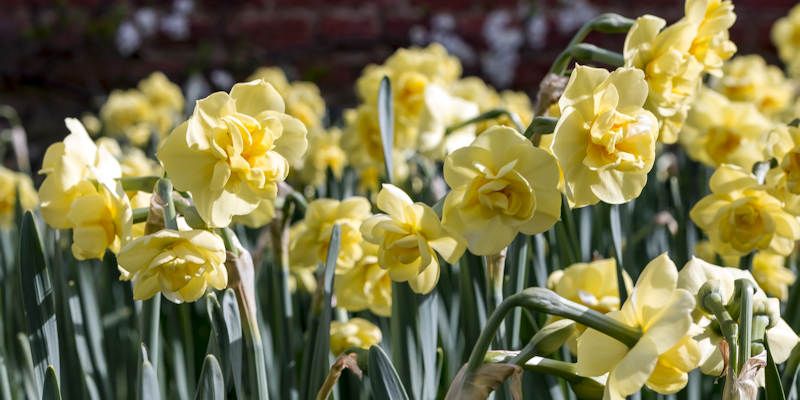
Today wildlife lovers across the UK have the chance to contribute to the first ever crowd-sourced nature diary to celebrate the first official day of spring.
The digital diary encourages people across the UK to document their observations of wildlife, their favourite places and what spring means to them.
It is spearheaded by the Arts and Humanities Research Council (AHRC) and academics from the Leeds-led Land Lines research project – which examines the history of nature writing – and is supported by the National Trust, Natural England and the Field Studies Council.
For generations, poets and prose writers have put pen to paper to express the importance of the arrival of spring and the burst of colour and busyness in the animal kingdom.
Entries could be a description of an early morning encounter with an urban fox, as people make their way to work, or capturing the wonderful sounds of birdsong when walking in the woods.
All of the diary entries, which can be up to 150 words, will be live curated from dawn to dusk, and could take the form of a poem or something about the symbolism or meaning of spring.
People can upload their diary entry and any accompanying image to the AHRC website and also share them on social media using the hashtag #springnaturediary
Writer Abi Andrews will then select the entries from across the UK that best capture the arrival of spring for a specially produced ebook.
“The spring diary will give nature lovers the chance to participate in an event that combines the best traditions of citizen science with the opportunity to produce their own nature writing.”
Dr Pippa Marland, part of the Land Lines research team, based at the School of English, said: “The crowd-sourced spring diary will give nature lovers across the UK the chance to participate in an event that combines the best traditions of citizen science with the opportunity to produce their own nature writing.
“It will offer a unique snapshot of the beginning of spring this year and mark an important moment in the history of nature writing in the UK.”
Prof Roey Sweet, Director of Partnerships and Engagement at the Arts and Humanities Research Council, said: “Generations of writers have sought to capture the beauty and meaning of the arrival of Spring and the burst of new life that signals the change of season.
“We want people to record and share those signs, whether on the daily commute or a rural walk, so that through their words we can bring to life the essence of spring as it sweeps across the country.”
 Daffodils at Greys Court, Oxfordshire. Credit: National Trust, Hugh Mothersole
Daffodils at Greys Court, Oxfordshire. Credit: National Trust, Hugh Mothersole
The National Trust looks after and protects thousands of hectares of countryside, coast and gardens for people to enjoy. Its Head of Species and Habitats Conservation, Dr David Bullock, said: “This is an amazing time of year as nature starts to wake up with the lengthening of the days and the climbing temperatures. Blink, and you might miss the first bumble bee.
“Wherever you are in the country, there is lots that you can look out for. From the frogs in ponds to the honey bees finding nectar in the last of the snowdrops; the powerful songster - the mistle thrush - pronouncing its presence from the very top of the tallest tree to hungry badgers excavating lawns searching for grubs and juicy plant roots.”
Natural England have two hundred and twenty four National Nature Reserves in England, and the Field Studies Council have twenty sites across the UK. Both organisations will be helping us to celebrate the start of spring, welcoming visitors to experience a range of stunning locations and encouraging people to write about what they see.
Funded by the AHRC the Land Lines research project, based at the universities of Leeds, St Andrews and Sussex, has been examining the literary, social and cultural impact of nature writing from 1789 to the present day.
In 2017 the Land Lines team and AHRC launched a nationwide search for the UK’s favourite nature book. Hundreds of people nominated books and thousands voted in an online poll won by Chris Packham’s Fingers in a Sparkle Jar.
Common Ground, by University of Leeds History of Art alumnus Rob Cowen, took third place in the poll.
Further information
Top image: Spring lambs dozing at Ickworth in Suffolk. Credit: National Trust, Justin Minns
For interviews, contact University of Leeds Media Relations and Communications Manager Gareth Dant via g.j.dant@leeds.ac.uk or call +44(0)113 343 3996.
The Arts and Humanities Research Council, which is part of UK Research & Innovation, funds world-class, independent researchers in a wide range of subjects: history, archaeology, digital content, philosophy, languages, design, heritage, area studies, the creative and performing arts, and much more. This financial year the AHRC will spend approximately £98 million to fund research and postgraduate training, in collaboration with a number of partners. The quality and range of research supported by this investment of public funds not only provides social and cultural benefits and contributes to the economic success of the UK but also to the culture and welfare of societies around the globe. www.ahrc.ac.uk